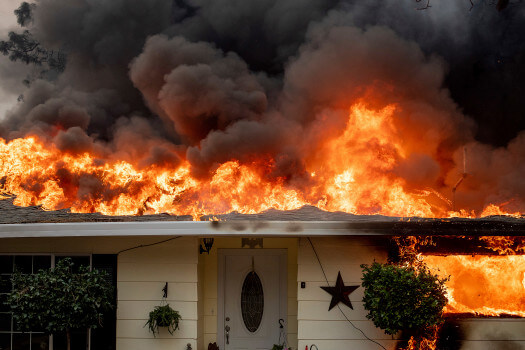By Nathan Park, National Housing Conference

When Tropical Storm Imelda hit the southeast of Texas in September of this year, 2019 became the fifth consecutive year that the United States suffered from more than $10 billion dollars in damages due to natural disasters. Over the past four decades, natural disasters have cost the U.S. more than $1.7 trillion, a number that will continue to rise as climate change increases the likelihood that natural disasters will occur. Last month, however, San Francisco Bay Area residents experienced a different kind of climate emergency.
In October, an onslaught of dry, strong winds spurred investor-owned utility company Pacific Gas & Electric (PG&E) to announce planned blackouts just days before they were slated to occur. Two weeks later, another round of blackouts hit ratepayers. The two historic blackouts, which were announced for 800,000 and 940,000 PG&E customers respectively (totaling nearly 2.7 million people), were intended to mitigate the risk of PG&E’s electrical infrastructure causing fires. After declaring bankruptcy at the beginning of this year, PG&E was deemed responsible for the 2018 Camp Fire—which killed 84 people—in addition to 12 fires that burned the region in 2017. PG&E expects to continue large-scale blackouts for the next 10 years as they attempt to correct after decades of disinvestment in their infrastructure and other safety measures.
We have seen the tragic ways in which fires affect housing and resident stability. More than 200,000 have evacuated due to the Kincaid Fire. Over the past few weeks, we spoke with NHC member organizations that own and operate properties throughout Northern California, including BRIDGE Housing Corporation, Community Housing Improvement Program, Eden Housing, Enterprise Community Partners, The John Stewart Company, Non-Profit Housing Association of Northern California, Stewarts of Affordable Housing for the Future and Terra Search Partners. They substantiated reports that PG&E did not properly communicate to officials and residents when the blackouts would occur and who would be affected. This made preparations for the blafckout difficult and uneven. But while nationwide reporting often added missteps in communication to the long list of failures by PG&E, our members expounded upon it as a source of anxiety and fear for impacted individuals.
Energy blackouts have a disparate impact on lower income households. One NHC member recounted anxiety that spread across multiple properties, especially senior affordable housing. Senior tenants are more likely to have chronic diseases and other health issues that require equipment to be plugged into the electrical grid. This reality materialized in outcry during the blackouts from tenants who depended on life-saving electronic medical equipment such as defibrillators and CPAP machines and had to scramble to find alternative locations to connect to power.
Another NHC member noted the loss of electricity meant elevators would not work, effectively boxing in senior and residents with disabilities who depend on elevators to get in and out of their buildings. These residents and low-income households are also less likely to be able to afford a night or two in a nearby hotel that does have power. Refrigerators that have shutoff means the need to replace spoiled food with money that low-income families may not have access to—for families surviving using food stamps, the federal government does not reimburse for food that has spoiled.
Despite this gap, resources to shield our most vulnerable communities from future blackouts are limited. At the federal level, the Investment Tax Credit (ITC) has been one of the few ways to incent homeowners to install solar power systems, providing a 30 percent recoup of costs for the purchaser. But a three-year phaseout period begins at the end of this year, as codified in the credit’s last extension. Additionally, it remains unclear if the ICT can be applied to residential rental properties due to a lack of explicit guidance and the upfront costs required to retroactively receive the credit keeps homeowners running on tight budgets from utilizing it. At the state level in California, the Self-Generation Incentive Program (SGIP) has been a key resource for families looking to add solar and battery systems to their homes. But while SGIP has installed over 11,000 battery storage systems since its inception in 2001, these projects have not benefited the state’s most vulnerable communities. Despite a 25 percent set aside in SGIP’s battery storage budget for equity projects, there has been no participation by low-income households since the carve out began in 2017, reflective of the lack of disposable income these households often face.
Climate emergencies are reshaping our understanding of stability across communities and within our homes. Our nation is facing a housing crisis, but if we try to solve it without considering the impact of natural and human-made disasters, our solutions will be insufficient.
At the National Housing Conference, we are working to craft a National Housing Act for the 21st century, which includes a focus on climate impact. Whether it’s blackouts, floods, fires or otherwise, we want to ensure our homes can weather the impacts and continue to sustain resilient communities. If you or your organization would like to work with us on our climate impact or other National Housing Act working groups, please contact me at npark@nhc.org.

